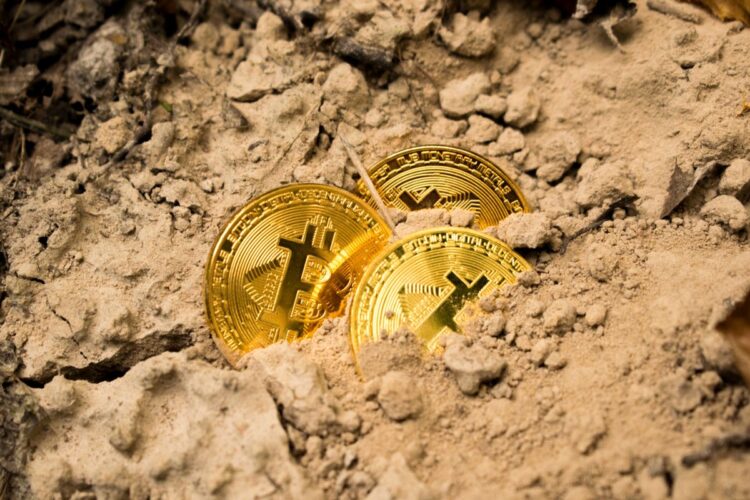The worth of a well-known digital currency, Bitcoin, has been hitting new highs every day as a growing number of optimistic investors bet big on the cryptocurrency’s potential to become a popular asset. Bitcoin just reached a high of $34,000, and cryptocurrency experts anticipate the digital currency will continue to increase in 2024.
However, as Bitcoin’s value climbs, it appears to have sparked a parallel argument between Bitcoin bulls and bears. While bulls expect Bitcoin to become a mainstream asset, bears point out how unpredictable the digital currency has been in the past. Also, if you are looking for a performance marketing affiliate network, you can visit this site by tapping on it.
After a catastrophic meltdown in 2018, Bitcoin, known for its volatility, rebounded significantly in 2024. Digital currency has increased by about 800 percent since mid-March last year.
Thus, why is the value of the contentious digital coin skyrocketing so quickly? Here are a few possible explanations:
Page Contents
Popularity In The Event Of A Pandemic
Bitcoin’s popularity, which had taken a significant hit in 2018 and remained dormant for much of 2019, began to gather up steam in 2024, which the IMF has dubbed the “Year of the Great Lockdown.”

Source: unsplash.com
Throughout the year, the Covid-19 outbreak wreaked havoc on economies worldwide, forcing the entire world to implement stringent lockdowns. The following variables severely affected the global economy, and all types of popular investments and assets were severely harmed.
Growing investor apprehensions about traditional assets established the ideal conditions for Bitcoin’s resurgence. Experts had written off the currency just a few years ago, but it has since risen as many major brand investors and companies hoarded the digital money.
According to cryptocurrency specialists, more worldwide investment portfolios are increasingly adopting cryptocurrency as an alternative asset to traditional assets such as shares, gold, and money. Bitcoin has now spread beyond the circle of “tech nerds” and speculators, according to Antoni Trenchev, founding director and co-founder of Nexo in London.
JP Morgan Chase and Co, a global investment bank and financial services provider, has predicted that Bitcoin’s value will climb sharply in the long run if volatility stays under control.
During The Epidemic, An Alternate Asset
As investors rushed to secure their funds in safe places like gold during the epidemic, some chose to bet on the unconventional Bitcoin.
Both types of investors profited. Those who put their money into Bitcoin, on the other hand, were richly rewarded, with profits four times higher than gold investors. A growing number of international investors are considering investing in digital coins rather than gold. However, given gold’s high market capitalization, such growth will likely occur over a more extended period.
There Is Limited Stock Available
Another possible cause for the present cryptocurrency craze is the restricted supply of Bitcoin in existence. It should be emphasized that the total number of Bitcoins available is limited to 21 million, with 18 million currently produced and in circulation.
Bitcoin’s value was unchanged by the coronavirus pandemic since its availability cannot be raised, unlike fiat currencies, which plummeted owing to increased money printing. Despite its reputation for violent swings, its value climbed consistently in 2024 and showed less volatility.
Is There Another Bubble?
While proponents of Bitcoin trading disagree, many analysts believe the volatile digital currency is on the verge of another bubble after experiencing another exponential spike in 2017. The following year, Bitcoin experienced a rapid drop and a frantic sell-off.
History Of Bitcoin And How It Gained Popularity:
On January 3rd, 2009, a few weeks after the original whitepaper was published, the very first lines of code were added to the bitcoin blockchain. Satoshi Nakamoto is credited with writing these codes of code, known as the “blockchain network.” Nakamoto sent ten bitcoins to Hal Finney on January 12th, and a new finance counterculture was born.
The value of bitcoin was nil at this point. Users essentially paid one other bitcoins in exchange for positive forum comments. On May 22nd, 2010, the first “actual” transaction was placed. Laszlo Hanyecz spent $10,000 bitcoin ($30) on two pizzas.

Source: unsplash.com
Bitcoin was initially a currency with a philosophy: instead of a central bank, it had code and Nakamoto’s whitepaper, both of which implied cynicism toward traditional financial institutions. Nakamoto, on the other hand, disappeared. The mechanism designed to run without trust encountered trust concerns as digital money grew popular.
As the price of bitcoin has soared, it has become yet another investment option for the financial system it was designed to destroy. Bitcoin is now a component of the system it was supposed to overturn ten years ago.
“A completely peer-to-peer version of electronic cash would allow digital wallets to be transmitted directly from one party to another without passing through a banking institution,” begins the original Satoshi Nakamoto white paper.
Bitcoin exemplifies how strange money is at its core. Cash is not quite “real” in the same way a tree is. It is a human innovation, a value token that facilitates transactions. In 2009, many individuals were looking at other options to the mainstream banking system, which had collapsed tragically. Money is at the heart of banking, as most people perceive it.
But, when the bankers are gone, what does money look like? Bitcoin was the most nuanced conceivable answer to society’s collective fears about the banking system, out of all the previous efforts at internet-based currency — and there were many.
The End Of Bitcoin’s Beginning
The distributed ledger is another essential tool for avoiding banks and the government. The public parts of the “blockchain,” a log of all trades conducted over time, are accessible to anyone. In theory, no organization is necessary to guarantee the integrity of transactions. They do not even need to know who you are if you can keep your account private.
However, as the last decade has demonstrated, losing trust as a component of one aspect of the financial system causes trust issues everywhere, which is how the counterculture arose. To make your bitcoins business profitable, you had to persuade others to do the same. On networks like IRC and Reddit, bitcoin groups sprang up.
The demise of Silk Road signaled the end of bitcoin’s infancy. It was possibly at this point that it became evident that isolating financial firms from finance did not necessarily imply a more reliable environment, nor did it ensure state protection. When Mt. Gox declared bankruptcy, it just added to bitcoin’s trust issues.





